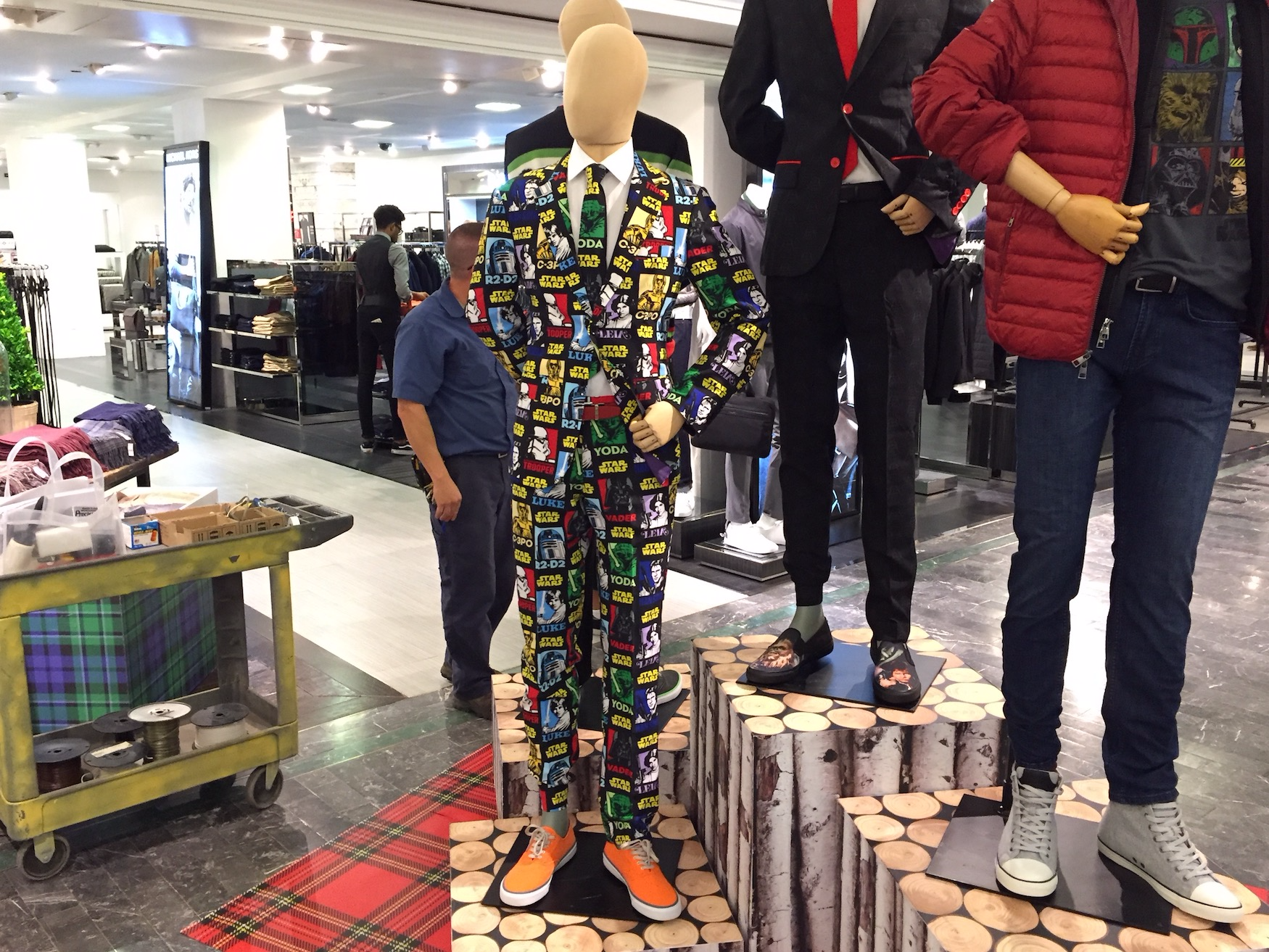- Lord & Taylor’s flagship store in Manhattan was sold to WeWork for $850 million in October.
- The retailer said it would rent around 25% of the space and operate as a scaled-down version of its former self.
- But on Tuesday, Lord & Taylor announced that it would be closing this location completely.
- We visited the store in October. Here’s what we found.
Lord & Taylor is saying a final goodbye to its flagship Manhattan store.
Seven months previously, its parent company, Canadian retailer Hudson’s Bay, announced that the company would be scaling back operations and selling its landmark Lord & Taylor store on Fifth Avenue to co-working startup WeWork for $850 million. The plan was for Lord & Taylor to rent about 25% of the space to run a smaller version of the store.
These plans have now been abandoned.
On Tuesday, it confirmed that the well-known department store would be vacating the building for good after more than 100 years in the location. The building will serve as WeWork’s headquarters.
WeWork recently raised $4.4 billion in funding from SoftBank Group and SoftBank Vision Fund and is now considered the most valuable startup in New York City.
The sale is symbolic for the struggling department store and for retail as a whole, as shoppers continue to move away from brick-and-mortar stores toward online options.
2017 saw a record-high rate of store closings, which has continued in 2018. More than 3,800 closures are expected this year, according to an analysis by Business Insider. This includes department stores such as Macy's, Sears, and JCPenney.
We visited Lord & Taylor's flagship Fifth Avenue store on a Wednesday in October after it announced that the building would be sold to WeWork. While the store was offering plenty of discounts, it attracted a small fraction of the significant foot traffic outside.
Here's how Lord & Taylor will end its run at its iconic Fifth Avenue location:
We went to the store, which is located at 424 5th Avenue, on a Wednesday afternoon. There was significant foot traffic nearby.

Some of the displays promoted retro styles that seemed to be targeted toward middle-aged shoppers.

Inside, the store wasn't attracting as many customers as you'd expect from the bustle outside.

The discounts were immediately apparent.

Even premium items, like jewelry, were on sale.

One floor up, the shoe section was a little more crowded.

Here, we found the first of Lord & Taylor's efforts to appeal to younger shoppers in the form of a phone-charging station.

We also noticed relics of a bygone era. Given the emergence of curated, online clothing delivery services like Stitch Fix and Trunk Club, Lord & Taylor's personal stylist service may not provide the competitive advantage it once did.

As we moved up through the store, it became apparent that Lord & Taylor has invested in eye-catching displays.

But they didn't seem to be drawing much foot traffic.

For the most part, the women's clothes seemed to be targeted toward a middle-aged demographic.

High-end labels like Armani and Kate Spade were common ...

... as were cashmere sweaters, which were EVERYWHERE.

Lord & Taylor did make overtures toward younger shoppers with yoga apparel.

Another effort to compete with online retailers — a price-matching guarantee.

The cashmere sweaters were inescapable.

The discounts continued in the men's section.

Still, there weren't many customers shopping for men's clothes.

It wasn't hard to understand why some of the items were on sale — like this purple velvet blazer.

The men's offerings were more oriented toward millennials.

The efforts to appeal to young shoppers were more obvious with the graphic tees ...

... and novelty suits.

Here's another of Lord & Taylor's methods to make their stores relevant to online shoppers.

This display (for cashmere sweaters, of course) creeped us out a bit.

It's never too early for Christmas decorations.

Ultimately, the discounts and other efforts to attract online shoppers were apparently not enough to fend off the retail apocalypse.

